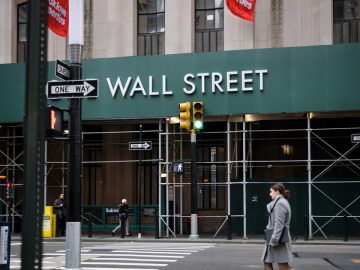CLEVELAND, Ohio – More jobs, more tax revenue, more spending at local businesses — all totaling hundreds of millions of dollars in economic benefits for the Cleveland area.
These are the grand, alluring promises that team officials and politicians are expected to peddle when and if the city of Cleveland and the Cleveland Browns strike a publicly subsidized lease-extension deal to renovate the lakefront stadium.
But it’s all bunk, say economists who study public stadium financing.
Experts say three decades’ worth of economic research shows that large government subsidies for professional sports venues are not worth it –and never come close to generating the economic returns that are used to justify the public’s contribution of hundreds of millions of dollars.
As West Virginia University economist Brad Humphreys put it during a June panel discussion at Cleveland Public Library: “There’s zero evidence, in 30 years of peer-reviewed academic research, that a professional sports team in a city generates any substantial new jobs, raises wages, raises income or raises property taxes.”
Cleveland.com and The Plain Dealer reviewed the research and captured the thoughts of some of the nation’s foremost authorities on the economics of sports stadiums, as the debate looms over how much the public ought to invest in a football stadium in Northeast Ohio.
Not worth it
Economists long ago — during the stadium-building boom of the 1990s and early 2000s – all but settled the question of whether sports teams and stadiums are economic drivers for an overall city or region. They answered that question with a resounding “no.”
Among other studies of that era, a 1997 paper published by the Brookings Institution, which used various methods of empirical testing, concluded that the economic benefits of sports teams and their stadiums are “far smaller than proponents allege” and in some cases, their presence in a city amounts to an economic drain.
The presence of major league sports team in an urban area was found to have no overall impact on wages or income, according to research from 1999 and updated in 2015, which looked at all U.S. cities that hosted professional teams from 1969 to 2011.
By the early aughts, researchers were delving more deeply into this effect.
In 2003, they found there was a small bump in earnings for local workers in the amusement and recreation sector, but those increases were offset by decreased earnings and employment in other sectors of the economy. And when it comes to construction jobs, a 2002 examination of two venues built in St. Louis found no regional increase in such jobs, nor on wages in the construction industry.
Other studies sought to zoom in on the neighborhoods immediately surrounding stadiums, to see whether tangible economic benefits existed on a smaller scale, even if they didn’t carry over to an entire city or region.
This wave of research found that when there are economic benefits from stadiums, they only really occur within a mile or two of the location. And in those cases, they are limited to a small subset of sports-related businesses, like food and beverage operators.
Why stadiums don’t generate substantial economic activity
A 2003 study by Humphreys and University of Maryland economist Dennis Coates, along with related research, seems to explain why stadiums are not economic engines for urban areas.
First, there’s a trade-off effect, in which other types of businesses located close to stadiums — – say, those that don’t serve food and drinks to fans — are negatively impacted by game-day congestion, crime and other negative effects.
And secondly, research points to a substitution effect, where the economic gains from a stadium siphon off spending that would otherwise naturally happen at other types of entertainment venues.
In short, that means fans aren’t spending more money overall because a sports team is located in a particular city. They’re just pumping money into that sports-related business, instead of spending it on other regional entertainment options, like movies or concerts.
“What professional sports are good at is moving economic activity around different parts of the city,” Humphreys said.
More events and tax collections? Sure. Still not worth it.
In the case of a new indoor Browns stadium, Cleveland stadium guru Ken Silliman talked about a different aspect of the substitution effect.
Proponents of building a dome argue the stadium would draw new concerts into the Cleveland area. But Silliman points out that much, or all, of that so-called new business would be pulled from other venues like Rocket Mortgage FieldHouse, which local taxpayers just subsidized to the tune of more than $185 million dollars.
In effect, taxpayers would be “cannibalizing” their own previous investment, Silliman said.
Even then, domed stadiums draw in relatively few additional events. And the economic impact of those extras is small.
College of the Holy Cross economist Victor Matheson, who also attended the Cleveland panel discussion this summer, explained how Detroit’s domed stadium hosted 38 concerts between 2002 and 2023 – 26 more than the 12 hosted at Cleveland’s stadium during the same period. If Cleveland wanted to obtain those results, it would only average out to 1.2 additional concerts every year.
And other big-ticket events are few and far between, especially as more domed stadiums are built that compete for such business – things like NCAA men’s basketball Final Four tournament, or college football championships, Matheson said.
“In reality, you’re talking about a couple of additional events here,” Matheson said. “No matter what stadium you build, you are building a stadium that’s going to sit empty 340 days a year.”
Using historic hotel tax collections in a handful of U.S. cities between 2012 and 2019, Matheson found that NFL regular season games generate about 21,000 room-nights at hotels in a given city each year. While that average generated $11 to $12 million in hotel spending, only a fraction – about $2 million in taxes – flowed into public coffers for such cities.
Two million dollars in taxes can finance roughly $30 million in construction costs, Matheson said. If such revenues are used to justify public stadium subsidies, Matheson noted how $30 million is a far cry from the hundreds of millions of dollars cities often shoveled into stadium projects. The tax gains are far outstripped by the cost to taxpayers in those cases, he said.
Some negatives
Aside from little justification for public subsidies, economists say there are some measurable downsides to stadiums, including increased crime, congestion and health impacts.
Research points to the concentration of aggressive fans, plied with alcohol, as one flashpoint for increased crime. Police officers redirected from their normal duties to handle game-day events is another potential factor.
Findings from a 2016 study of NFL games in eight U.S. cities estimated $700,000 in sports-related crime each regular season.
There’s also evidence that policing costs are higher in cities that host professional sports games versus cities that don’t, as crowd control and directing traffic around the stadium tax police resources.
Some positives
All of that said, economists recognize the value of civic pride and the social benefits of having a home team to root for.
Perhaps that factor is magnified somewhat in Ohio, the birthplace of professional football, or in Cleveland, where fans are still smarting over Art Modell’s move to Baltimore in 1996.
But economists have figured out a way to put those feelings into quantifiable data. One such tool is called the “contingent valuation method,” which uses surveys of individuals to identify how much an intangible benefit is worth to them, even if they don’t, in this case, actually attend games.
While this type of research is imperfect and has its critics, researchers who employ it have found that public subsidies to sports stadiums are much larger than the CVM value expressed by taxpayers.
Research conducted between 2007 and 2012 on the Minnesota Vikings, Indianapolis Colts, and three other professional teams found the average CVM values to represent less than one-fifth of the total public subsidies awarded to each team.
This is what researchers call “amenity value.”
A 2022 review of 130 stadium studies — conducted by Kennesaw State University’s John Charles Bradbury, along with Coates and Humphreys – summed up the CVM findings this way when it comes to new stadium construction: “The total social benefits tend to be far less than typical subsidies.”
Matheson, at the Cleveland panel discussion, said such “amenity value” is worth roughly $10 to $40 million per sports franchise. Pair that with the average $2 million in hotel tax gains, and Cleveland might have justification to spend up to $75 million or so on a renovated stadium, he said.
Mayor Justin Bibb’s $461 million-plus offer — far less than what Browns owners Jimmy and Dee Haslam want – is already far beyond that sum.
Read more:
Here’s how $117M over the next decade could keep Cleveland Browns stadium functional
The fine print: Bibb’s Cleveland Browns stadium offer isn’t anywhere close to the 50/50 split the Haslams want, while putting general fund at risk





